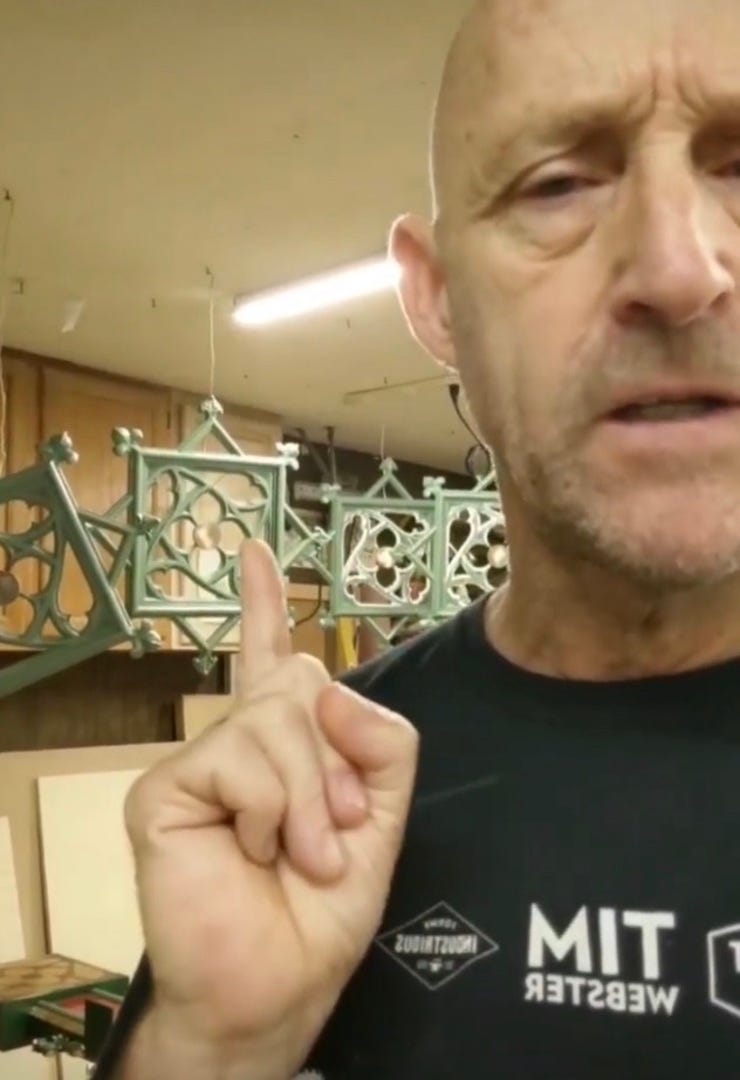Gareth's Tips, Tools, and Shop Tales - Issue #14
Why You Need 1-2-3 Blocks
Anyone who’s followed my DIY writing knows that I am a huge fan of 1-2-3 Blocks. These are precision milled 1” x 2” x 3” hardened steel blocks commonly used in machining. They are also popular in all sorts of workshop and hobby applications. In this “I Like to Make Stuff” video, Bob Clagett runs through many of the uses of these versatile shop assistants.
Making it "Perfect Enough"
My friend, Andy Birkey, has been working on a big Gothic church restoration job and chronicling his daily process via Instagram Stories. It's been fun and informative watching his daily progress. But now, it's crunch time. In dealing with the looming Thursday deadline, Andy is starting to make that pivot in his mind that we all need to make as we come to the end of a project. Letting go of that quest for perfection and instead making it "perfect enough" for the context in which the project will live. As Andy points out, he's been up in the high ceilings of churches. Up there, you can see all of the imperfections previous builders left because they knew those imperfections would never be seen from the ground. The ceiling looks amazing at the distance from which it is actually viewed. And that's all you need to shoot for. I encounter this all of the time in my miniature painting. Close up, under bright desk lights, I can see every imperfection, blemish, and flub. But on the tabletop, none of that is visible. They are perfect enough.
Cutting Leather on a Table Edge
Jimmy DiResta shared this tip on his Instagram Stories. He uses a sharp knife and the true edge of a work table to cut a straight line in a piece of leather. Since the tabletop has a cutting mat, he was able to align his cut edge along the mat's grid and square off 90-degree cuts to create a perfect (enough) rectangle without the need of a ruler or square.
Zip-Ties as Cable Ties
Newsletter reader Keith Monaghan writes: "I used zip-ties and #6 x 1/2” screws to make little harnesses for the drip lines that water my wife’s hanging baskets. I wrapped the ties around the drip line leaving them one click looser than snug. I then positioned the zip-ties and drove a screw through the long “tail” of the tie, then trimmed it off. It works for runs of wires in the garage, too. I’d use wider zip ties or smaller screws next time, as the ones I used were a bit tricky to properly align. It’s a quick and dirty solution that will last through summer and until I can come up with a more discreet path for the drip lines next spring."
Intro to Addressable LEDs
It is amazing how many cool, completely controllable lighting effects devices are available, at really reasonable cost, from places like Adafruit and Digi-Key. In this Dig-Key how-to, they show how you can run all sorts of addressable LED displays from a single I/O pin on an Arduino microcontroller. Just in time for starting to think about Halloween projects!
Sitting on Top of Your Fridge
Anyone who's done any reading into the "science" of creativity knows that keeping your mind open and supple, thinking outside of the proverbial box, is a requisite to invention and dreaming up new ideas. One trick for triggering creative thinking that might strike you as odd (until you actually try it): Sitting on top of your fridge. Or, at least, that's what a friend of mine used to do to get a fresh perspective on things. I try sitting in an area of my house or yard where I wouldn't normally hang out. Try taking a different route to work. Or, use your car's spoiler as a lunch counter (I found this picture online moments after I started writing this). The idea is to literally change your perspective to tweak your thinking. You'll be amazed at how this simple act can help relax some of your habituated thinking and doing.








